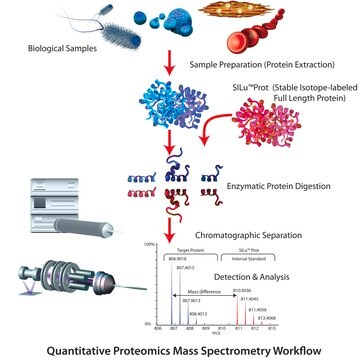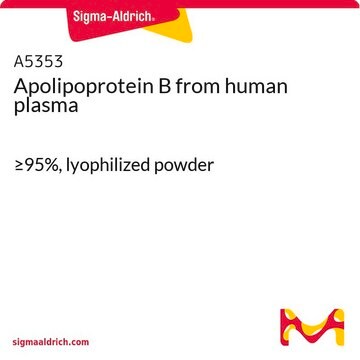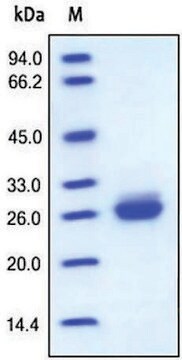A0722
Apolipoprotein A-I from human plasma
≥85% (SDS-PAGE), buffered aqueous solution
Synonym(s):
Apo A-I
About This Item
Recommended Products
biological source
human plasma
Quality Level
Assay
≥85% (SDS-PAGE)
form
buffered aqueous solution
mol wt
28.3 kDa
technique(s)
ELISA: suitable
UniProt accession no.
shipped in
dry ice
storage temp.
−20°C
Gene Information
human ... APOA1(335)
Looking for similar products? Visit Product Comparison Guide
Application
Biochem/physiol Actions
Apo-AI levels in normal plasma are 90-130 mg/dl. Apo-AI levels may be inversely related to the risk of coronary disease.
Physical form
Disclaimer
Storage Class Code
10 - Combustible liquids
WGK
WGK 3
Flash Point(F)
Not applicable
Flash Point(C)
Not applicable
Certificates of Analysis (COA)
Search for Certificates of Analysis (COA) by entering the products Lot/Batch Number. Lot and Batch Numbers can be found on a product’s label following the words ‘Lot’ or ‘Batch’.
Already Own This Product?
Find documentation for the products that you have recently purchased in the Document Library.
Customers Also Viewed
Articles
Since cholesterol is a water-insoluble molecule it must be packaged for transport within the plasma. The particles that package cholesterol, cholesteryl esters, and triglycerides for transport, are called lipoproteins.
Our team of scientists has experience in all areas of research including Life Science, Material Science, Chemical Synthesis, Chromatography, Analytical and many others.
Contact Technical Service







